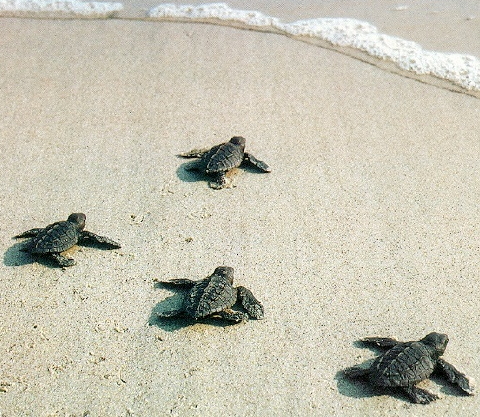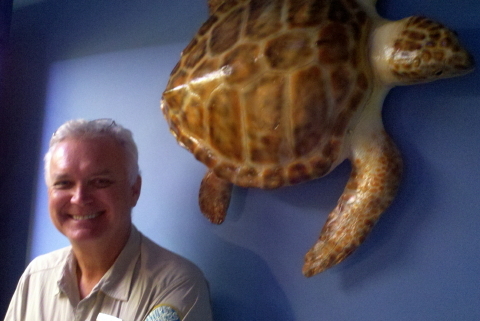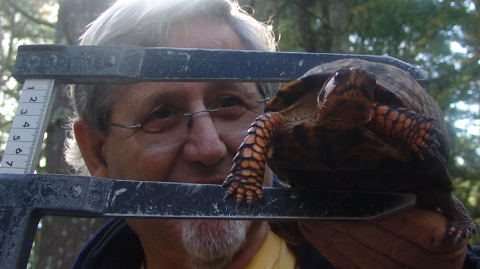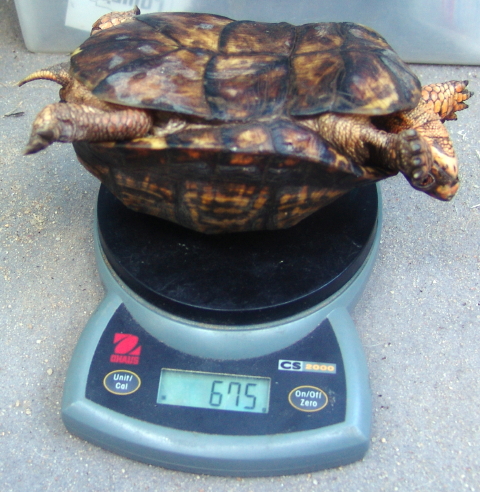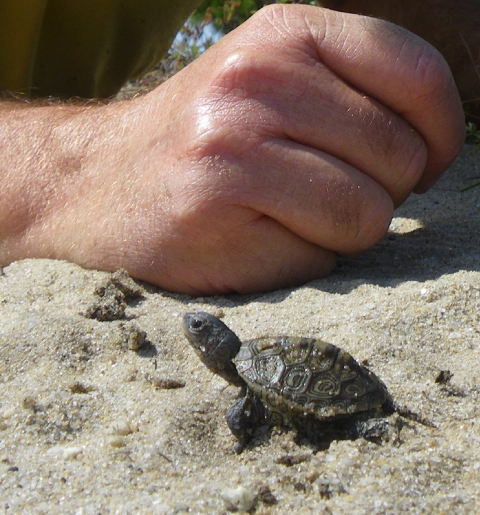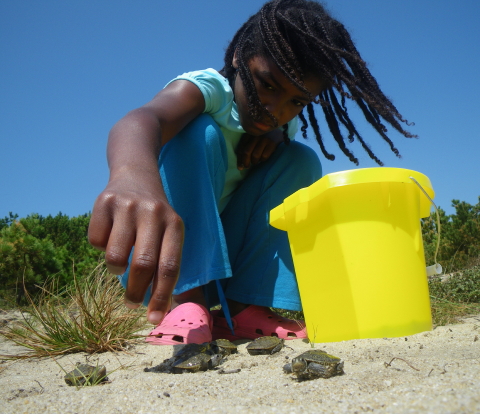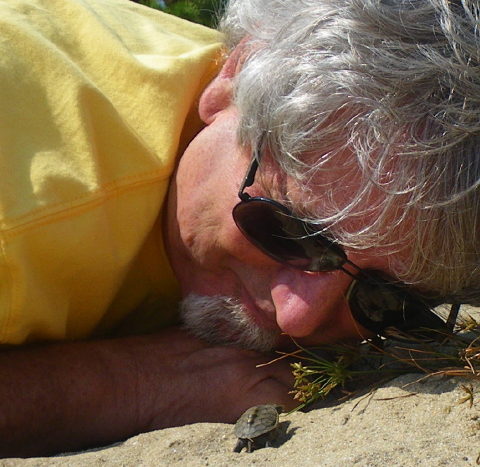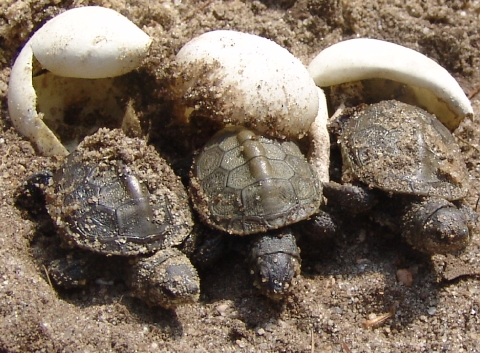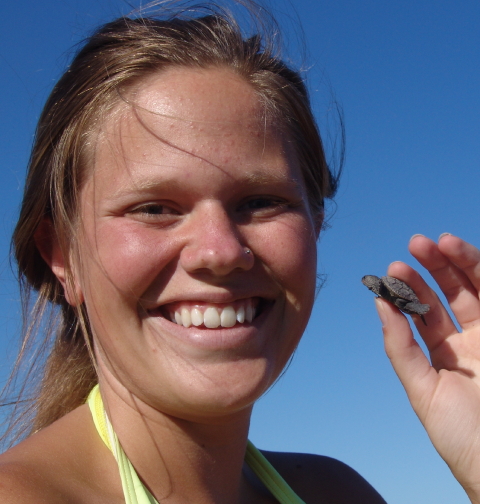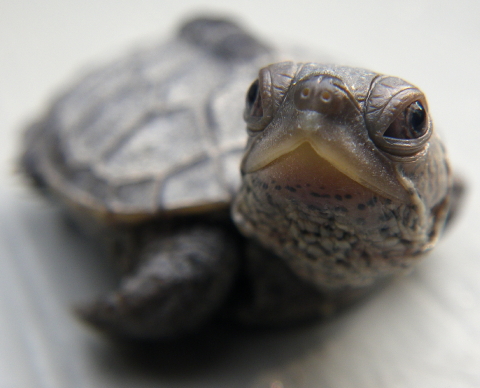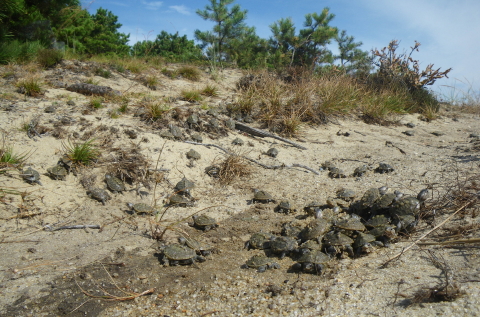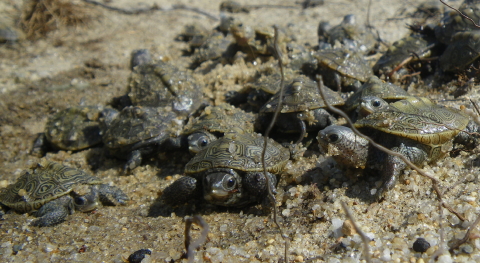SW Florida Loggerhead Hatchlings Scramble to Freedom
(Photo Courtesy of Ranger Randy Sarton)
Turtle Journal proudly salutes our colleagues in Southwest Flordia for their outstanding efforts in protecting sea turtle nests along the Gulf Coast.Â
Ranger Randy Sarton, Ritz Carlton Nature’s Wonders
According to Turtle Journal’s friend and colleague Ranger Randy Sarton, who leads Nature’s Wonders at the Naples Ritz Carlton on Vanderbilt Beach, preliminary data for the 2011 sea turtle nesting season has been compiled. Randy reports that Collier County had a total of 761 nests this season; one more than last year. Lee County, says Ranger Randy, held steady with last year at 89 nests. Sarton summarizes that 2011 marks the second consecutive year with relatively good, or at least improved, numbers. On the beach in front of the Ritz Carlton Hotel itself, Randy said they enjoyed five nests this last summer.
Ritz Carlton Male Gopher Tortoise
Turtle Journal’s Sue Wieber Nourse patrolled Vanderbilt Beach in Naples on November 1st and ran into this handsome male gopher tortoise strolling the beach near the Ritz Carlton. While protecting sea turtles that choose to nest on the Gulf Coast of Florida is a noble venture, threatened gopher tortoises (Gopherus polyphemus) spend their entire lives within a few tens of meters of their burrows. The survival of Florida’s gopher tortoises rests fully and completely in the hands of Floridians. Whether gopher tortoises survive or fade into extinction is a decision for Florida to make. They remain Turtle Journal’s favorite reptile species in Florida, and it would be a shame for Florida’s children and grandchildren and great grandchildren to lose the experience of these fabuluous native megafauna.  Turtles survived the dinosaurs, survived the asteroid that destroyed the dinosaurs, survived the giant lethal North American mammalian predators and even survived the arrival of humans on our shores, but they can’t seem to dodge the thoughtlessness of human modernity. Thanks to the great work of Nature’s Wonders, protection of native species remains an important topic of study for youngsters from two to one hundred two.
